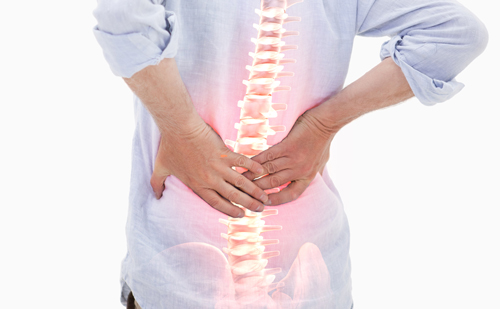
Low back pain is common and can result from overuse, muscle strain or injury. It is one of the leading causes of job-related disability and missed work in the United States and is considered chronic when it lasts for more than 12 weeks.
Dealing with low back pain can be frustrating, but there are plenty of at-home treatments and exercises that can make a big difference. Let’s dive into how to reduce low back pain and get you back to feeling your best.
At-Home Treatments for Low Back Pain
Low Back Pain Home Remedies
For those suffering from low back pain, there are several home remedies that can provide relief:
1) Heat and Cold Therapy
Applying heat or cold packs to the affected area can help reduce inflammation and relieve pain. Ice packs are typically used for the first 48 hours after an injury, while heat can be applied later to relax muscles and improve blood flow.
2) Over-the-Counter Pain Relievers
Nonsteroidal anti-inflammatory drugs (NSAIDs) like ibuprofen or aspirin can help reduce pain and inflammation. Always follow the recommended dosage and consult with a healthcare provider if you have any concerns.
3) Gentle Stretching and Yoga
Engaging in gentle stretching exercises and yoga can help maintain flexibility and relieve tension in the back muscles. Focus on stretches that target the lower back, hamstrings, and hip flexors.
4) Maintaining Good Posture
Practicing good posture, especially while sitting, can prevent further strain on the lower back. Use a chair with proper lumbar support and ensure your workstation is ergonomically arranged.
At-Home Physical Therapy for Lower Back Pain
At-home physical therapy can be a convenient way to treat and manage lower back pain. Here are some recommended exercises:
1) Pelvic Tilts
Lie on your back with your knees bent and feet flat on the floor. Tighten your abdominal muscles and press your lower back into the floor. Hold for a few seconds, then relax. Repeat 10-15 times.
2) Bridges
Lie on your back with your knees bent and feet flat on the floor. Lift your hips towards the ceiling, squeezing your glutes and keeping your back straight. Hold for a few seconds, then lower your hips back to the floor. Repeat 10-15 times.
3) Bird-Dog Exercise
Start on your hands and knees. Extend one arm forward and the opposite leg backward, keeping your back straight and core engaged. Hold for a few seconds, then return to the starting position. Repeat 10-15 times on each side.
4) Cat-Cow Stretch
Begin on your hands and knees. Arch your back upwards (cat pose), then slowly lower your back and lift your head (cow pose). Repeat this motion 10-15 times to improve flexibility and relieve tension.
Importance of Balance Exercises
Study on Balance Exercises
One study suggests that trunk balance exercises are especially important for treating low back pain.
In 2011, researchers compared two groups of people with chronic low back pain. Both groups performed flexibility exercises. One group added balance exercises, while the other added strengthening exercises. The exercises were performed twice a week for five weeks.
Study Outcomes
Outcomes measured were pain intensity, disability assessments, and quality-of-life measurements. The group that added balance exercises to flexibility exercises had the highest scores for quality of life. They also experienced less disability, although there was no difference in pain scores.
Comprehensive Exercise Plan
While at-home treatments can be helpful, the structured, professional approach offered by a physical therapy clinic is often more effective.
In a physical therapy clinic, you will benefit from a comprehensive exercise plan, which includes:
- Beneficial balance exercises: Balance exercises that use the hands and knees are some of the most effective.
- Aerobic exercises: For heart conditioning and strong recovery.
- Strengthening exercises: For stronger back, leg, and stomach muscles.
- Stretching exercises: To enhance flexibility and reduce stiffness.
Expert Guidance and Supervision
Working with a physical therapist provides expert guidance and supervision. This ensures you perform exercises correctly, avoiding further injury.
A physical therapist can adjust your treatment plan based on your progress and any changes in your condition.
Did you know you have Direct Access* to Physical Therapy? No referral, no problem!
Lifestyle Adjustments and Pain Management
Physical therapists can also teach you numerous ways to reduce lower back pain through:
- Lifestyle adjustments: Strategies that help you stay active.
- Risk reduction: Suggestions to reduce your risk of disability from back pain.
- Pain avoidance: Guidance on avoiding positions and activities that increase pain.
- Pain management: Use of ice and pain relievers.
- Injury prevention: Strategies to prevent further injury to your back.
Conclusion
While incorporating home remedies, at-home physical therapy, and proper sleep hygiene can significantly contribute to managing and alleviating low back pain, the expertise and personalized care provided by a physical therapist are invaluable.
Balance training can be a valuable addition to your treatment, especially when used as part of a multidisciplinary plan. Working with a physical therapist ensures you get the best possible results, keeping you active and free of pain.
If you’re in the Northern Virginia area and are currently struggling with low-back pain, don’t hesitate to reach out to us today! We’re here to help.
















